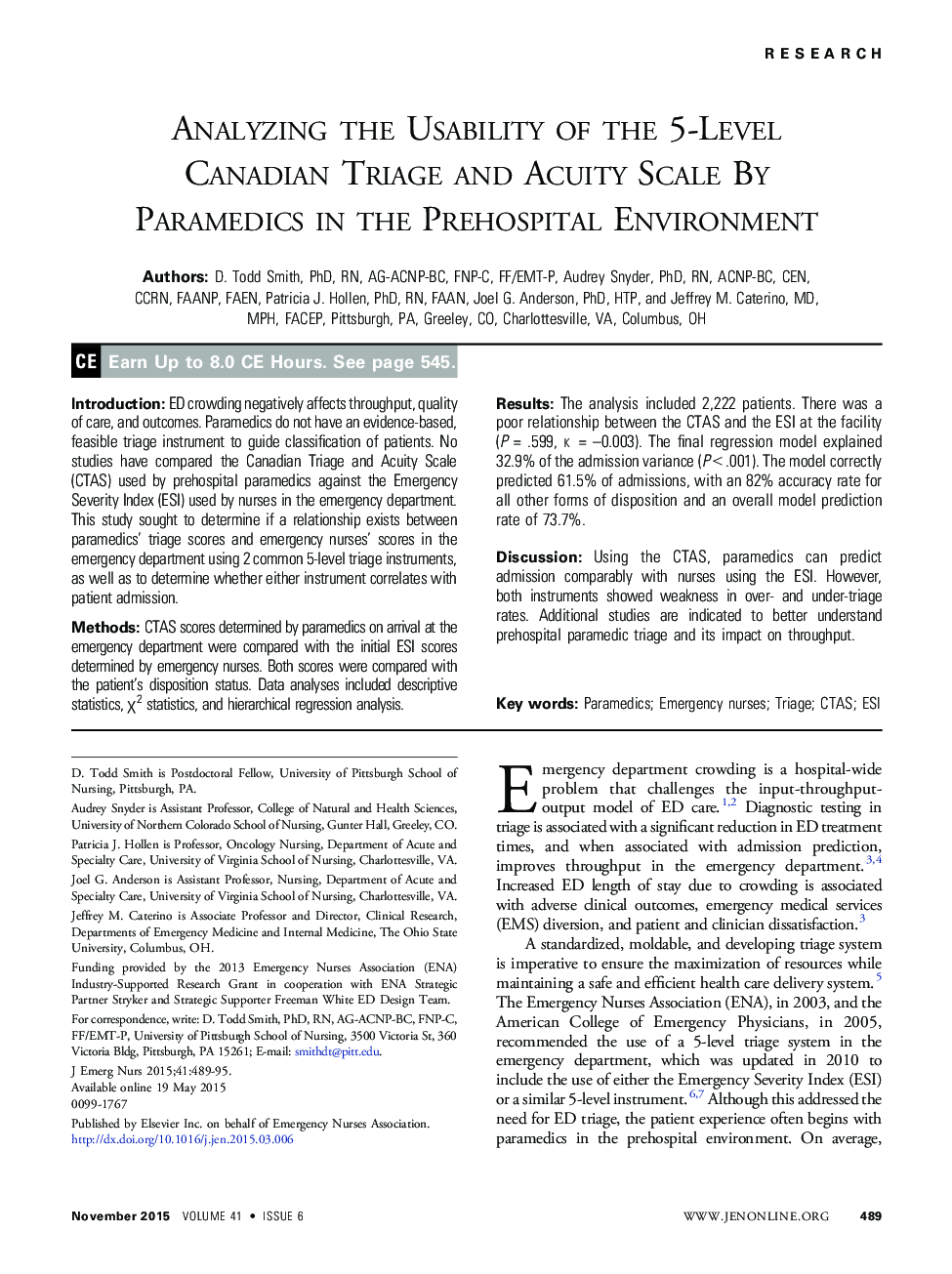| Article ID | Journal | Published Year | Pages | File Type |
|---|---|---|---|---|
| 2609535 | Journal of Emergency Nursing | 2015 | 7 Pages |
IntroductionED crowding negatively affects throughput, quality of care, and outcomes. Paramedics do not have an evidence-based, feasible triage instrument to guide classification of patients. No studies have compared the Canadian Triage and Acuity Scale (CTAS) used by prehospital paramedics against the Emergency Severity Index (ESI) used by nurses in the emergency department. This study sought to determine if a relationship exists between paramedics’ triage scores and emergency nurses’ scores in the emergency department using 2 common 5-level triage instruments, as well as to determine whether either instrument correlates with patient admission.MethodsCTAS scores determined by paramedics on arrival at the emergency department were compared with the initial ESI scores determined by emergency nurses. Both scores were compared with the patient’s disposition status. Data analyses included descriptive statistics, χ2 statistics, and hierarchical regression analysis.ResultsThe analysis included 2,222 patients. There was a poor relationship between the CTAS and the ESI at the facility (P = .599, κ = –0.003). The final regression model explained 32.9% of the admission variance (P < .001). The model correctly predicted 61.5% of admissions, with an 82% accuracy rate for all other forms of disposition and an overall model prediction rate of 73.7%.DiscussionUsing the CTAS, paramedics can predict admission comparably with nurses using the ESI. However, both instruments showed weakness in over- and under-triage rates. Additional studies are indicated to better understand prehospital paramedic triage and its impact on throughput.
